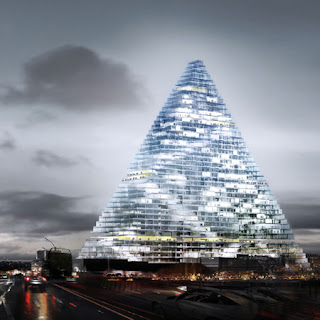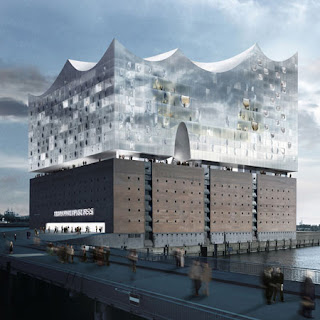Contemporary architectural practices do not seem to fit yesteryear’s conceptuali-zations of the modern and the postmodern.Whereas modern architecture (1920s-1960s) was dedicated to the possibility of utopia and the ideal of universal progress, postmodern architecture (1970s onwards) either lost all confidence in societal change, or didn’t feel the need to adhere to a wider social agenda. If modern architects had some kind of ‘positive orientation’ towards the future, postmodern architects are condemned, in the words of Lyotard, ‘to undertake a series of minor modifications in a space inherited from modernity’. The difference between the modernist and postmodernist attitude towards built space can thus be best described in terms of opposition. Previously, we used the notions of ‘modern enthusiasm’ and ‘postmodern irony’ as a shorthand to these, more or less, opposing positions.
In recent years, however, these comfortable definitions and familiar periodizations have become worn out up to the point where they seem to have lost all relevance for contemporary architectural practices. For one, as we previously suggested, it is hard to miss the return to commitment. While contemporary architects increasingly go back to the Future in terms of their attitude, they almost always express this rather metamodern enthusiasm by means of more or less postmodern styles.
We use the notion of postmodern architecture here as container for several “–isms” which consist of either a formal critique or a mannerist rehearsal of a High Modernism which adhered to strict functionalism (‘form follows function’), stylistic purity (‘ornament is crime’) and industrial materials (‘machine aesthetic’). Of course it can be argued that, nowadays, function once more dictates form, just as in the heydays of modernism. For architects need to somehow adapt their designs to the environmental characteristics – sun, wind, rain, oxygen – of a specific site in order to be able to build “green”. As true is this might be, contemporary architecture has been, and still largely is, dedicated to such postmodern “-isms” as aesthetic populism, historicism, deconstructivism and/or eclecticism. Again, New York’s Bank of America Tower is telling, here. Practitioners continue to employ postmodern styles, while working within a metamodern discourse. Architects, it seems, struggle to find an aesthetics proper to metamodernism.

A particularly interesting exception to this rule is the office of Herzog & de Meuron. In some ways, Herzog & de Meuron have always, through-out their careers, attempted to find formal alternatives to architectural postmodernism, an attempt which even tempted them to briefly return to the modernist purity of Le Corbusier. Their most recent designs, however, clearly articulate a metamodern attitude in and through a metamodern style: New Romanticism. This should come as no surprise. In previous posts – cf. Ragnar Kjartansson, David Thorpe and Glory At Sea – we have already described neoromanticism as an exemplary expression of the current structure of feeling (to use Raymond Williams’ phrase). In a following post we will provide you with a more detailed account of the look and feel of Herzog & de Meuron’s buildings. Meanwhile, please do have a look at such fine examples as the library of the Brandenburg Technical University (Cottbus, 2004); the Chinese national stadium (Beijing, 2008); the residential skyscraper at 560 Leonard street (NYC, under construction); the Elbe Philharmonic Hall (Hamburg, under construction) or Projet Triangle (Paris, under construction).

